The Federal Reserve’s “180-degree turn” has worked swimmingly for borrowers and risk-takers alike. The 10-year yield has dropped from 3.24% to 2.62%. That may encourage households and businesses to lever up with more debt. Meanwhile, stocks are surging upward, reaching for the record heights experienced during the September-October peak.
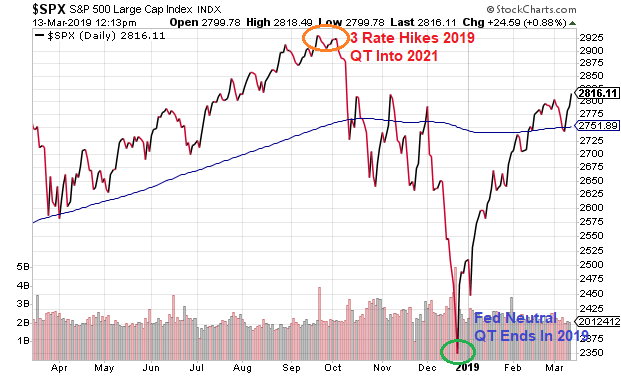
The question investors need to ask themselves now is, “Will the ‘Fed Put’ work on the next go-around?
It depends. And it likely depends on whether or not the U.S. is facing recessionary pressures.
Historically speaking, the Federal Reserve has successfully bailed out financial markets in a number of crises. The Fed successfully bailed out the largest hedge fund in the world, Long Term Capital Management, during the Asian Currency Crisis in 1998. Similarly, the Federal Reserve and other central banks/financial authorities successfully bailed out major European countries (e.g., Portugal, Italy, Greece, Spain, etc.) in the sovereign debt crisis of 2011.
On the flip side, the Fed failed to arrest the development of two 50%-plus bear market disasters in the last two decades. In spite of all the interest rate manipulation, in spite of all the jawboning, stock prices were still cut in HALF.
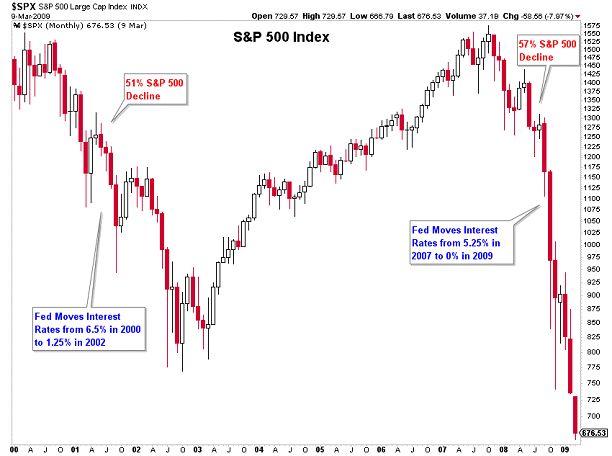
Simply stated, when markets fell in conjunction with recessionary pressures (e.g., 2000-2001, 2008-09), the Fed was unable to ward off monstrous price depreciation. This suggests that the Fed will throw spaghetti at the proverbial wall in the next downturn, but little will stick until the completion of an ugly stock mauling.
Equally concerning, the Fed has turned “neutral” with the overnight lending rate at an exceptionally modest 2.25%. In the last three recessions (i.e., 1990, 2001, 2008), the Fed had to lower the overnight lending rate five percentage points to stimulate the economy.
How can the Fed lower rates 5% from 2.25%? With negative interest rates? $10 Trillion in quantitative easing (QE)?
Granted, Federal Reserve officials publicly express few concerns about a U.S. recession in the near-term. Nevertheless, those same leaders pointed to global economic weakness for their policy flip-flop.
So what about the world, then? China set its target growth for 2019 between 6 percent and 6.5 percent, its slowest pace since 1990. Meanwhile, PMI economic output for the UK, Japan as well as the euro-zone is sliding toward contraction.
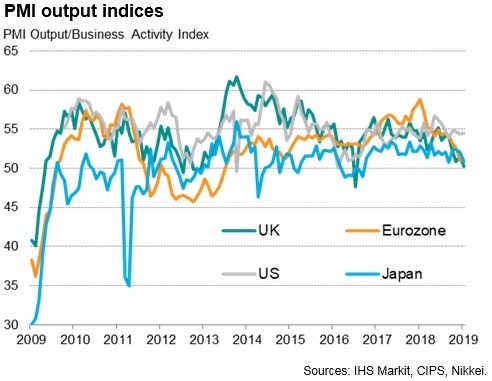
“Things are much better in the U.S.,” many proclaim. And there’s truth in the sense that a consumer-based, service-oriented economy does not rely as heavily on manufacturing or exports.
Still, job cuts in February hit their highest monthly total since July 2015. In the same vein, the Atlanta Fed’s GDP Now forecasts a meager Q1 growth rate of 0.4 %.
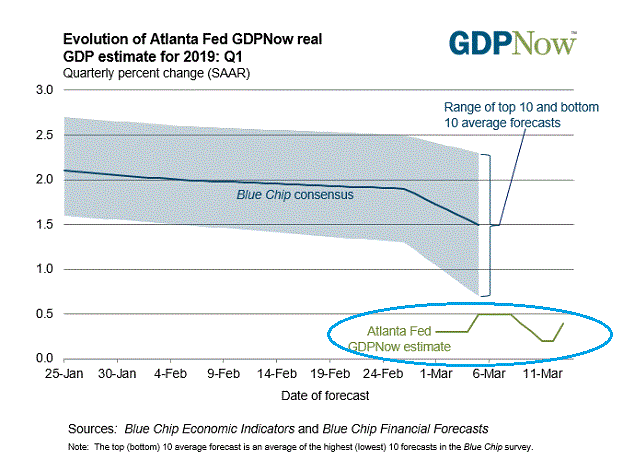
“So, what?” many may think. This is the perfect environment for the Fed to remain accommodating. And as long as they’re not tightening again, one might as well be buying equities.
Unfortunately, this ignores the exceptionally poor negative guidance by three-fourths of S&P 500 corporations. According to Michael Wilson, chief equity strategist at Morgan Stanley (NYSE:MS), “Earnings revision breadth has been some of the worst we have ever witnessed with both sales and margin guidance coming down across all sectors.”
If Wilson is correct about sales and earnings, extreme valuation levels will be even more out of whack. Some aggregate valuation models suggest that stocks have never been more oversubscribed.

Indeed, the current stock recovery may still turn out to be a massive head fake. For instance, in the 2000-2002 bear, stocks climbed 19%-20% off of a bottom on three separate occasions. Each time, bearish price destruction smacked stocks down to new depths.
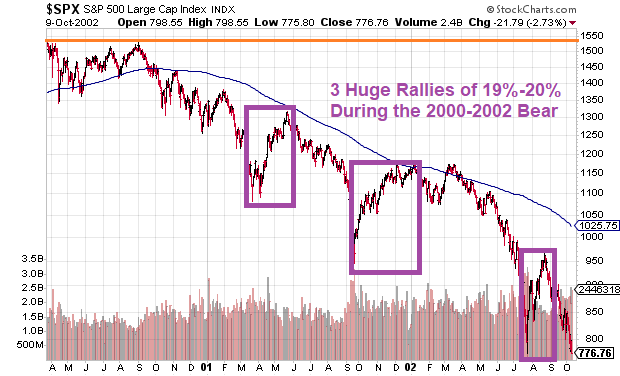
Right now, investors are choosing to look beyond clear-cut overvaluation measures, significant indications of economic weakness around the globe, as well as failures of the “Fed Put” during previous collapses. They may want to consider just how much total leverage is in the system.
For example, total leverage is higher at this moment than it was during the top of the tech bubble as well as the real estate bubble. This is problematic because, once falling prices trigger margin calls, excess leverage will unwind in extremely violent fashion. And if the “Fed put” should fail on the next go-around, one should not expect a 19.9% S&P 500 decline to be followed up with a “V-shaped” recovery.
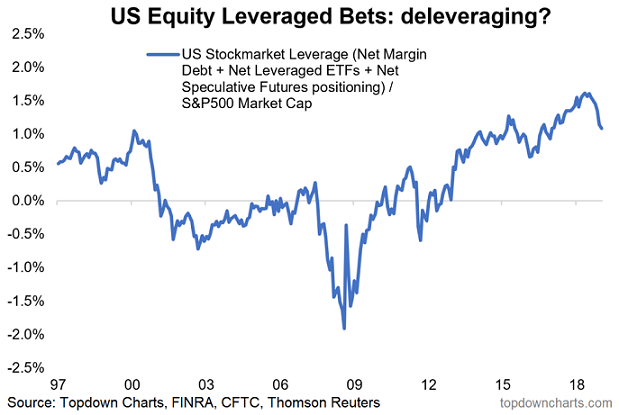
We continue to maintain a modest allocation to U.S. equity — an allocation that is lower than the top of our target range. We are participating in the current uptrend with exchange-traded trackers like iShares S&P 500 Value (NYSE:IVE), iShares Core Dividend Growth (NYSE:DGRO) and SPDR S&P 500 High Dividend (NYSE:SPYD).
